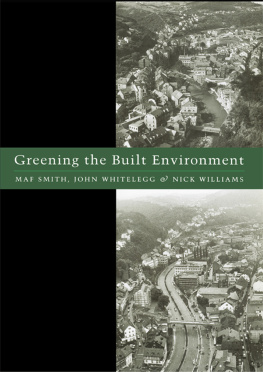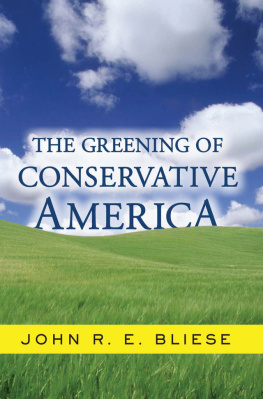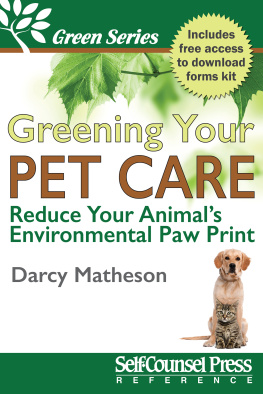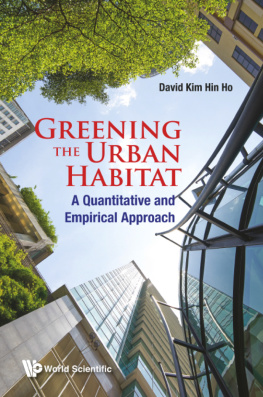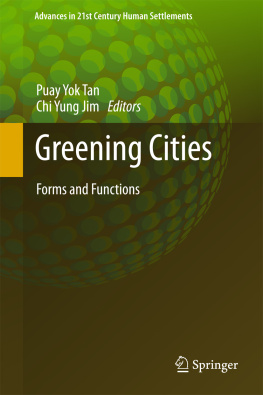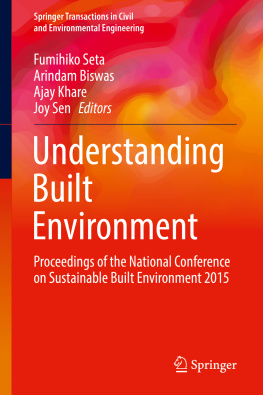Maf Smith - Greening the Built Environment
Here you can read online Maf Smith - Greening the Built Environment full text of the book (entire story) in english for free. Download pdf and epub, get meaning, cover and reviews about this ebook. year: 1998, publisher: Routledge, genre: Romance novel. Description of the work, (preface) as well as reviews are available. Best literature library LitArk.com created for fans of good reading and offers a wide selection of genres:
Romance novel
Science fiction
Adventure
Detective
Science
History
Home and family
Prose
Art
Politics
Computer
Non-fiction
Religion
Business
Children
Humor
Choose a favorite category and find really read worthwhile books. Enjoy immersion in the world of imagination, feel the emotions of the characters or learn something new for yourself, make an fascinating discovery.
- Book:Greening the Built Environment
- Author:
- Publisher:Routledge
- Genre:
- Year:1998
- Rating:4 / 5
- Favourites:Add to favourites
- Your mark:
- 80
- 1
- 2
- 3
- 4
- 5
Greening the Built Environment: summary, description and annotation
We offer to read an annotation, description, summary or preface (depends on what the author of the book "Greening the Built Environment" wrote himself). If you haven't found the necessary information about the book — write in the comments, we will try to find it.
Greening the Built Environment — read online for free the complete book (whole text) full work
Below is the text of the book, divided by pages. System saving the place of the last page read, allows you to conveniently read the book "Greening the Built Environment" online for free, without having to search again every time where you left off. Put a bookmark, and you can go to the page where you finished reading at any time.
Font size:
Interval:
Bookmark:
As every culture knows, to destroy one's own home is folly indeed
Earthscan
2 Park Square, Milton Park, Abingdon, Oxon OX14 4RN
711 Third Avenue, New York, NY 10017
Published by Taylor & Francis.
Practitioners and researchers must always rely on their own experience and knowledge in evaluating and using any information, methods, compounds, or experiments described herein. In using such information or methods they should be mindful of their own safety and the safety of others, including parties for whom they have a professional responsibility.
978-1-85383-404-2 (hbk)
BNRR . | Birmingham Northern Relief Road |
BSE CEC | bovine spongiform encephalopathy Commission of the European Communities |
CFC | chlorofluorocarbon |
CHP | combined heat and power |
CPRE | Council for the Protection of Rural England |
dB(A) | A-weighted sound level in decibels |
DIY | do-it-yourself |
DoE | Department of the Environment (to 1997; now Department for Environment, Transport and the Regions (DETR)) (UK) |
DSM | demand side management |
EIA | Environmental Impact Assessment |
EJ | exa joule (1 x 1018 joules) |
EPA | Environmental Protection Agency |
ETR | ecological tax reform |
EU | European Union |
GJ | gigajoule (1 x 109 joules) |
ha | hectare |
IPCC | Intergovernmental Panel on Climate Change |
IRA | Irish Republican Army |
ISEW | Index of Sustainable Economic Welfare (UK) |
kWh | kilowatt hour |
LCA | life cycle analysis |
LETS | Local Exchange Trading Systems |
LTO | landing and take-off |
MAI | Multilateral Agreement on Investment |
NAFTA | North American Free Trade Area |
NASA | National Aeronautics and Space Administration (US) |
NEC | National Exhibition Centre (Birmingham, UK) |
OECD | Organisation for Economic Co-operation and Development |
PM10 | particulate matter (<10 microns) |
PNR | private non-residential (parking) |
RCEP | Royal Commission on Environmental Pollution |
RMI | Rocky Mountain Institute |
SEA | Strategic Environmental Appraisal |
SMUD | Sacremento Municipal Utility District |
T5 | Terminal 5 (London Heathrow Airport) |
TDM | traffic demand management |
TERN | Trans European Road Network |
UPVC | unplasticized polyvinyl chloride |
VAT | value added tax (UK) |
voc | volatile organic compound |
w | watt |
WHO | World Health Organization |
WRI | World Resources Institute |
yr | year |
ZEV | zero emission vehicle |
Font size:
Interval:
Bookmark:
Similar books «Greening the Built Environment»
Look at similar books to Greening the Built Environment. We have selected literature similar in name and meaning in the hope of providing readers with more options to find new, interesting, not yet read works.
Discussion, reviews of the book Greening the Built Environment and just readers' own opinions. Leave your comments, write what you think about the work, its meaning or the main characters. Specify what exactly you liked and what you didn't like, and why you think so.

